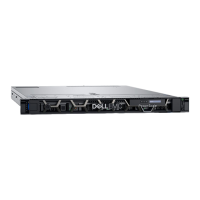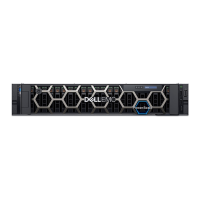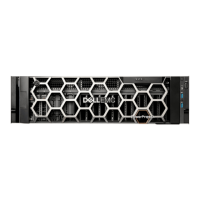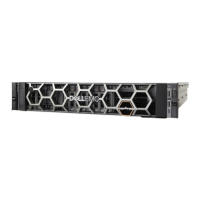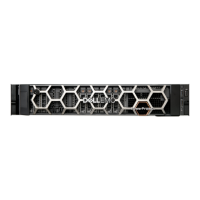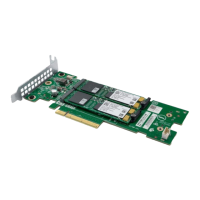For RHEL 7 / SLES 12:
1. From the multipath –l command output above, identify the device multipath to target creating a file system. In this example, the first
time multipath is configured, the first device will be /dev/mapper/mpatha, correlating to sg block devices /dev/sdb and /dev/sdd.
NOTE: Run the lsscsi command to list all SCSI devices from the Controller/Target/Bus/LUN map. This also
identifies block devices per controller.
2.
Run the mkfs.xfs/dev/mapper/mpatha command to create an xfs type file system.
3. Run the mkdir/mnt/VolA command to create a new mount point for this file system with a referenced name, such as VolA.
4. Run the mount /dev/mapper/mpatha /mnt/VolA command to mount the file system.
5. Begin using the file system as any other directory to host applications or file services.
6. Repeat steps 1-5 for other provisioned volumes from the ME Storage Manager. For example, to /dev/mapper/mpathb, correlating
to
sg block devices/dev/sdc and/dev/sde.
SAS host server configuration for Linux
The following sections describe how to configure SAS host servers running Linux:
• Complete the ME Storage Manager guided system and storage setup process.
• Refer to the cabling diagrams within this guide before attaching a host to the storage system; careful planning will ensure a successful
deployment.
• Administrative or privileged user permissions are required to make system-level changes. These steps assume root level access and
that all required software packages are already installed (for example, DM Multipath).
Attach SAS hosts to the storage system
Perform the following steps to attach SAS hosts to the storage system:
1. Ensure that all HBAs have the latest supported firmware and drivers as described on the Dell Support web site. For a list of supported
SAS HBAs, see the Dell EMC ME4 Series Storage System Support Matrix on the Dell Support web site.
2. Use the SAS cabling diagrams to cable the host servers directly to the storage system.
3. Identify SAS HBA initiators to connect to the storage system by doing the following:
a. Open a terminal session.
b. Run the dmesg|grep scsi|grep slot command.
c. Record the WWN numeric name.
Register the host and create and map volumes
1. Log in to the ME Storage Manager.
2. Access the Host Setup wizard by doing one of the following:
• From the Welcome screen, click Host Setup.
• From the Home topic, click Action > Host Setup.
3. Confirm that you have met the listed prerequisites, then click Next.
4. Enter a hostname.
5. Using the information from step 3 of Attach SAS hosts to the storage system to identify the correct initiators, select the SAS initiators
for the host you are configuring, then click Next.
6. Group hosts together with other hosts.
a. For cluster configurations, use the Host groups setting to group hosts in a cluster.
• If this host is the first host in the cluster, select create a new host group, then provide a name and click Next.
• If this host is being added to a host group that exists, select Add to existing host group. Select the group from the drop-
down list, then click Next.
b. For stand-alone hosts, select the Do not group this host option, then click Next.
7. On the Attach volumes page, use the options to change the volume name and size (by default two 100GB volumes are created);
select the pool for the volume; and add or delete volumes. Click Next.
NOTE:
Dell EMC recommends that you update the name with the hostname to better identify the volumes.
8. On the Summary page, review the change, then click Configure Host.
• Click Previous to go back and changes the settings.
• Click Yes to return to the Select Host page of the wizard, or choose No to close the wizard.
Perform host setup
51
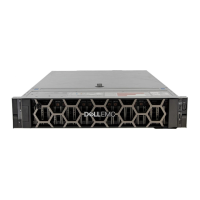
